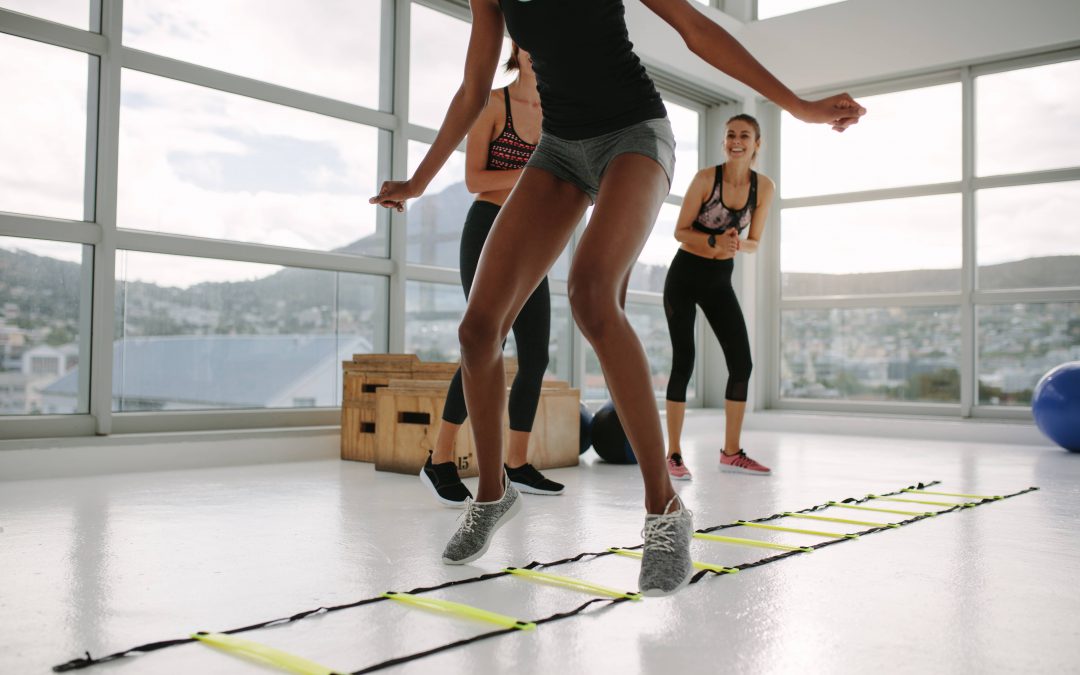When we think of physical fitness, our minds immediately go to a few definitions. Cardiovascular fitness and strength are the two obvious ones, but there’s also a place for muscular endurance, flexibility, and mobility in well-rounded fitness. Most of the exercise we do is aimed at improving one or more of these areas.
Those core components are related more to the health and condition of the body. However, there’s also the bracket of skill-related fitness, which includes different abilities that can help improve performance at sports or exercise. The six components of skill-related fitness are agility, balance, power, speed, coordination, and reaction time.
Agility is pretty technical and describes your ability to change and control the direction and speed you move. Agility requires elements of other skills like balance, coordination, and reaction time, as it means you’re able to change the direction of your whole body and alter your speed smoothly and very quickly.
How does agility improve sports performance?
Agility is a skill that comes into many sports and often separates the average from the elite.
Changing direction and speed rapidly holds pride of place in many sports skills. For many individual sports like tennis and badminton, it’s needed to respond to the ball’s position quickly. In team sports like hockey, football, netball, volleyball, and rugby, it’s arguably even more important. You need agility to respond to the ball’s position and the players on the opposition.
Football
In football, agility helps with dribbling and passing, successfully avoiding the opposition. It also plays a massive role in the goalkeeper’s success, as they need to respond to the ball’s direction as it flies towards them rapidly.
Tennis
Tennis players always need to respond to the changing direction of a ball. Agility means they’re able to change direction quickly at the very last second and make sure their racket makes contact with the ball and delivers it back.
Netball
In netball, passing between players requires high levels of agility from all members of the team. Otherwise, the opposition can take control of the game in no time.
Rugby
There’s lots of power and strength needed for rugby, but agility is an important skill too. Rugby players must respond and move in rapid time to dodge tackles and make those breakaway tries.
How can you improve agility?
For some people, agility comes naturally. For others, it’s not something they find as easy. Luckily, there are lots of drills that sportspeople do to practice and develop razor-sharp agility.
1. Shuttle runs
Shuttle runs are a standard part of a pre-match warm-up. Sprinting back and forth within a short distance lets your practice your quick turns and rapid change of motion. You can do this with only your body or make it harder by taking a ball with you.
2. Tyre run-throughs
Tyre run-throughs can be easily replicated with a ladder, hoops, or other similar markers. Run through the obstacle, placing one foot in each space in the ladder or tyre right to the end, without tripping or putting a foot down anywhere else.
3. Cone weave through
This drill is usually done with the sport’s ball and involves rapidly weaving through tightly set cones to the left and right. You can alter the distance between each cone to replicate a real match situation where you’d need to weave in and out of the opposition or other obstacles.
4. Plyometric jumps
Plyometrics are mainly used to develop power but can be beneficial for agility too. Lateral plyometrics involve jumping with your feet together from one side to the other. Plyometric box jumps involve jumping onto a raised box, then stepping back down again. The quicker the pace of the jumps, the more your agility will improve.
5. Sprint and stops
Changing direction is an essential part of agility, but so is changing speed. Sometimes, stopping movement altogether is a successful tactic in sport. Sprint stops involve your coach or another person instructing you to sprint on the spot and then stop suddenly. This tests your ability to respond rapidly to the unpredictable.



